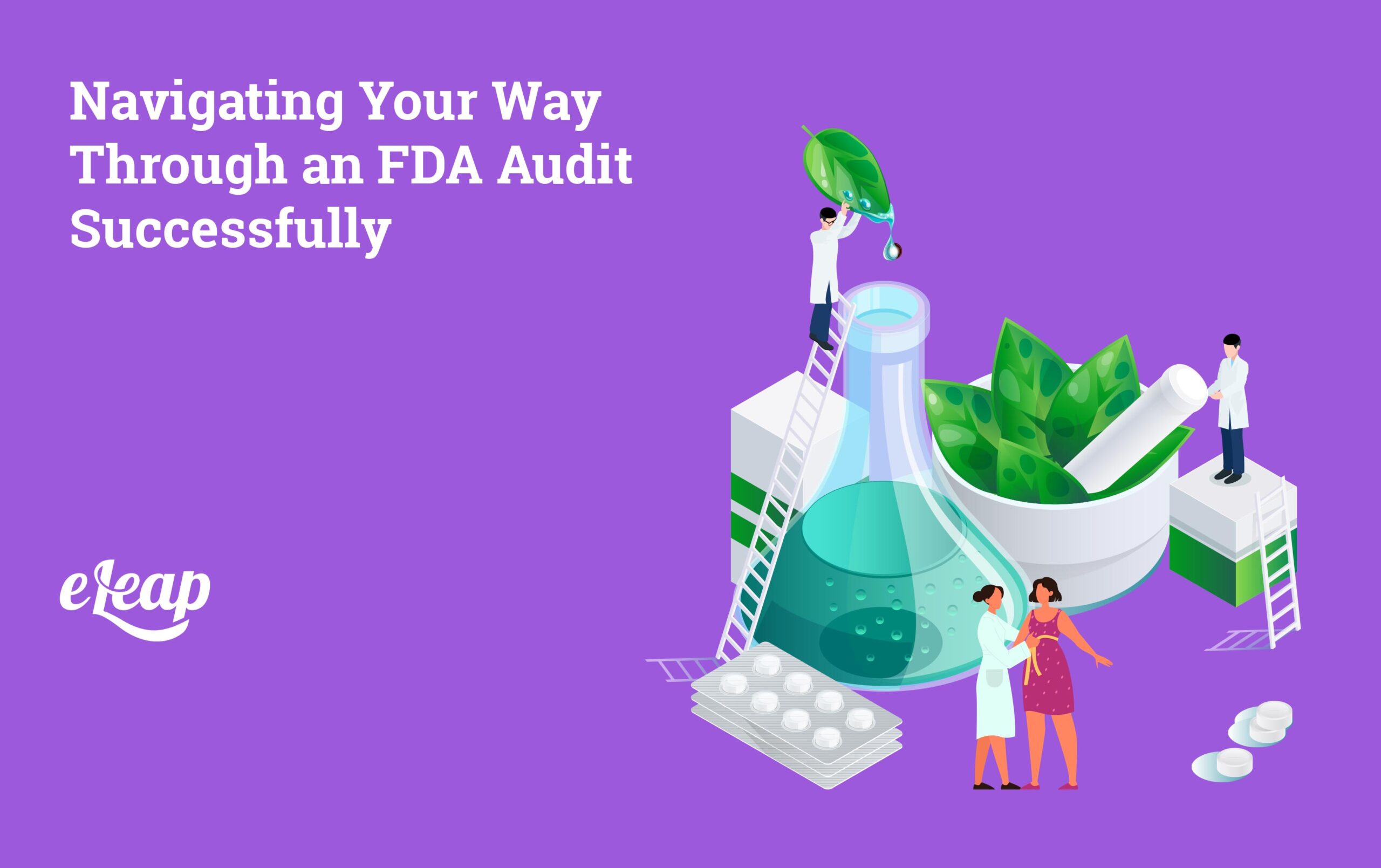Navigating Your Way Through an FDA Audit Successfully

Devotion to regulatory requirements to promise product safety and efficiency is profound in the medical production and delivery sector. The Food and Drug Administration (FDA) is a vital regulatory agency in the United States that controls this industry. It carries out inspections to evaluate devotion to pertinent rules and principles.
Occasionally called inspections, FDA audits are carried out to evaluate adherence to rules controlling many sides of the medical sector, such as the construction, labeling, delivery, and storage of pharmaceuticals, food items, and medical apparatus.
FDA audits are essential for protecting public health because they ensure businesses follow the rules and have quality control systems that satisfy FDA requirements. Getting and keeping market authorization for medical items requires adherence to FDA standards.
Precise record-keeping and documentation organization are essential to prove compliance during an FDA audit. Businesses should ensure that all pertinent papers are easily accessible and arranged to make the audit process more accessible. Preparing for FDA audits requires investing much in employee education and training. Teaching staff members about company strategies and regulations also pays to develop a compliance philosophy in the office.
Companies can find zones of weakness and speech for any compliance issues ahead of the actual FDA audit by leading mock audits internally or with the help of outside specialists.
The key to a successful audit is maintaining transparency throughout the audit process and ultimately collaborating with FDA inspectors. Businesses should grant inspectors access to the facilities and paperwork they require and be transparent and attentive to their questions.
During an FDA audit, it is crucial to ensure all necessary documentation is current and easily accessible. Businesses should be ready to offer thorough documentation to prove that they have complied with all legal requirements.
Clarifying doubts or issues throughout the audit requires an open dialogue with FDA inspectors. Businesses should respond promptly to audit results and take the initiative in resolving issues brought up by inspectors.
FDA Inspection Types

Inspections before approval (PAIs)
Before approving a request for a new prescription, biologic, or medical device, pre-approval checks, or PAIs, are carried out. During these reviews, the manufacturer’s facilities, processes, and controls are assessed to make sure they comply with guidelines and can produce high-quality, safe, and operative products.
Continual Monitoring Evaluations
Routine surveillance inspections are periodically conducted to evaluate continued adherence to legal requirements. These inspections may be planned according to a preset inspection frequency or carried out randomly to guarantee ongoing supervision of regulated establishments.
Observance Inspections via Follow-Up
Observance Observation A regulated facility’s corrective actions in response to previously discovered compliance problems are evaluated during inspections. The purpose of these inspections is to confirm that disciplinary actions are working and ensure that regulations are followed consistently.
In-Cause Examinations
For-cause inspections are conducted in reaction to particular grievances, unfavorable incidents, or other clues suggesting possible regulatory non-compliance. These inspections, which aim to quickly pinpoint and fix any underlying issues, may be prompted by customer complaints about product faults, safety dangers, or legal violations.
Inspections after the market
Post-market inspections follow a product’s approval or clearance for marketing to evaluate compliance with regulatory standards. These inspections, which can be carried out regularly or in response to particular issues or incidents, are centered on monitoring product efficacy, safety, and quality in practical contexts.
What to expect from an audit?
Inspectors’ arrival
When inspectors arrive at the facility, the inspection process usually starts. Before starting their evaluation, inspectors may show their qualifications and explain the inspection procedure.
First Meeting
The inspection officially begins with the inaugural meeting. Inspectors may review the inspection’s goals and scope, review the inspection procedure, and respond to any preliminary queries from the party being examined during this meeting.
Inspection Process Usually, the inspection process entails carefully examining all records, facilities, operations, and protocols about the activities subject to regulations. Inspectors may watch operations, speak with staff members, and ask for further documents or information.
Review of Documentation
During the audit, inspectors evaluate several papers, including batch records, regulatory proposals, validation protocols and reports, quality control records, and standard operating procedures (SOPs). These official papers must be easily accessible and arranged so that they may be inspected.
Facility Tour
To evaluate if the building complies with regulations concerning the layout, upkeep, and cleanliness of the space, inspectors may take a tour of the building. They could also check the machinery, storage spaces, and production areas to ensure everything complies with the relevant rules.
Interviews To obtain more information and evaluate staff members’ familiarity with pertinent policies and guidelines, inspectors may interview individuals engaged in regulated activities. Employees must be ready to respond truthfully and precisely to inquiries during these interviews.
When finished correctly and with a detailed grasp of the inspection process, undergoing an examination can be an exciting but manageable experience. Industries can effectively manage examinations and keep regulatory compliance by being aware of what to suppose and taking proactive measures to guarantee compliance.
The Most Frequently Occurring Inadequacies in FDA Audits
Inspectors may find several issues during these audits that must be fixed with corrective action.
- Issues with Documentation
- Insufficient Instruction and Training
- Failure to Adhere to Regulatory Requirements
- Inadequate CAPAs, or Corrective and Preventive Actions
- Inadequate Management Supervision
Maintaining regulatory compliance and guaranteeing the quality and safety of products depend on addressing shortcomings found during FDA audits. Companies may improve product quality, reduce public health and safety risks, and show their dedication to regulatory compliance by implementing practical corrective actions.